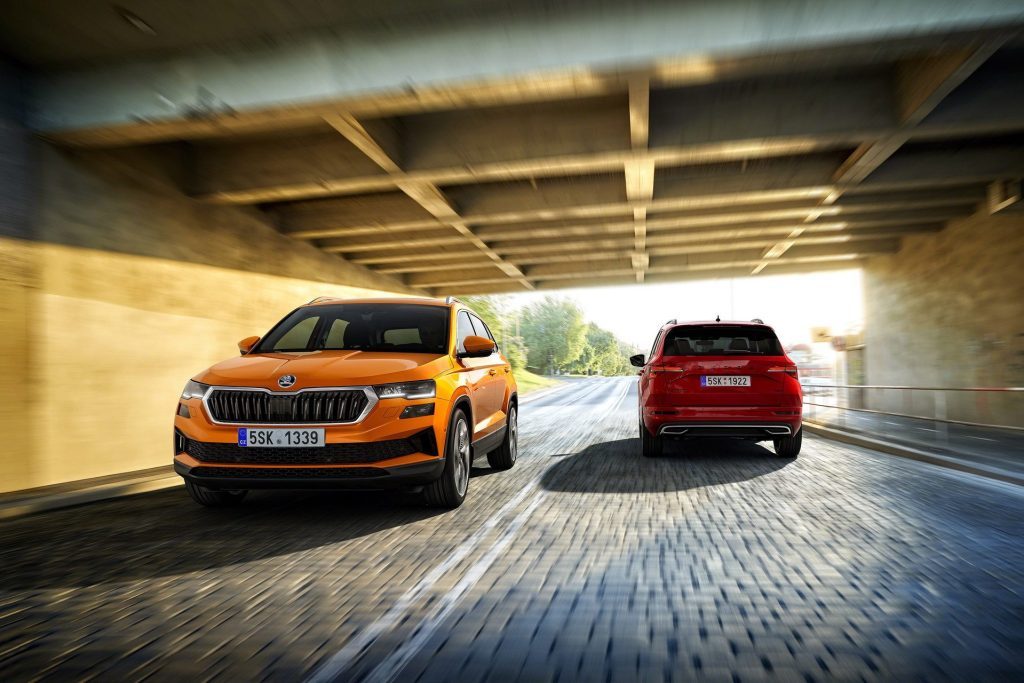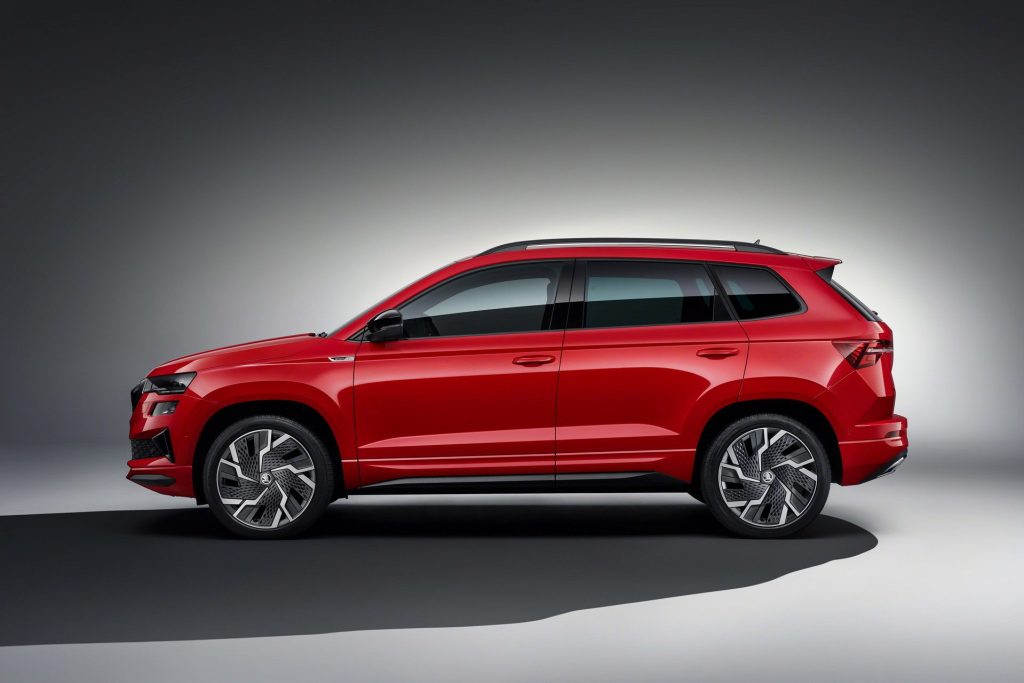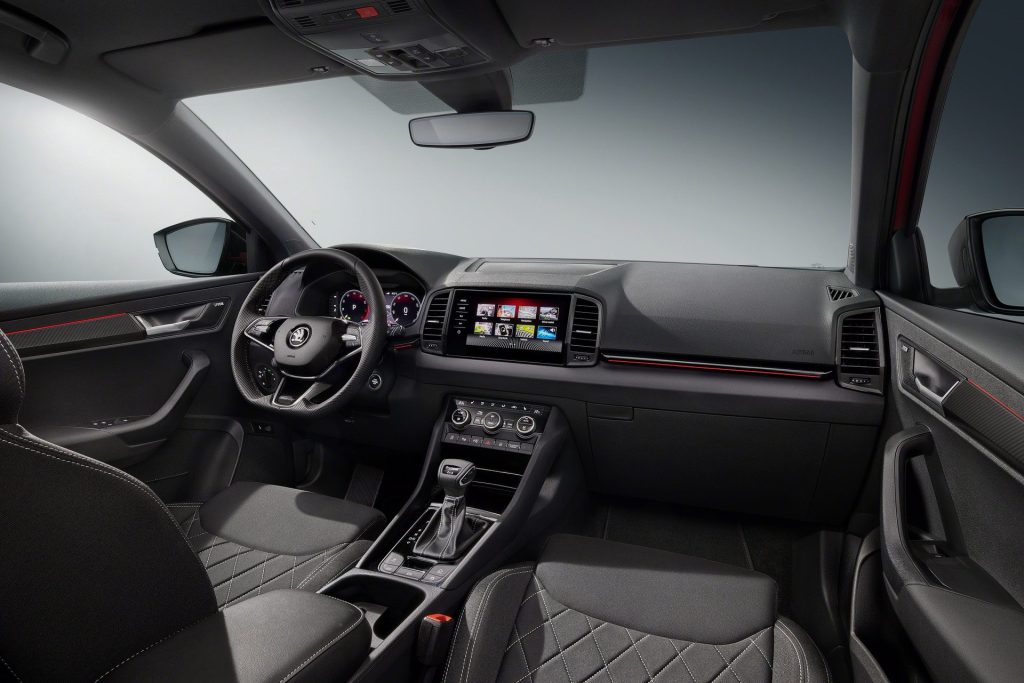The last few years have been big for Skoda’s growth. And most of that links to the introduction of the well regarded Kodiaq and Karoq, with the Kamiq also playing a late cameo.
Now the Czech brand’s middle child, the Karoq, has been given its first update. Inevitably the changes are more evolutionary than revolutionary. Those not immediately familiar with the Karoq’s styling might have to look twice to notice the changes, but they’re there.

The new headlights are slimmer, and feature Volkswagen Group’s full-LED Matrix technology. The front bumper is new, too, with a larger mouth and integrated air curtains. Atop the new bumper is Skoda’s new corporate six-sided grille.
There’s less change at the back, where more subtle tail lights and a new rear bumper reside. Arguably the most significant tweak is the new wheel options. The 17-inch, 18-inch, and 19-inch wheels all feature aero designs, helping the Karoq achieve a slipperier drag coefficient of 0.30 cd.

Engine-wise, the Karoq has been launched overseas with either a turbocharged 1.0-litre triple producing 81kW, a 1.5-litre turbofour producing 110kW, a 2.0-litre turbodiesel producing either 85kW or 110kW, or the flagship 2.0-litre turbofour producing 140kW.
All models are front-wheel drive barring the flagship 2.0-litre, which is all-wheel drive. While the Karoq can be had with a six-speed manual in Europe, expect all of the Karoqs to hit our shores to come with the seven-speed DSG.

Predictably, the Karoq will be smartly optioned. An 8-inch digital cluster is standard across the range with a 10.25-inch unit optional, while the best models will come with a large 9.2-inch touchscreen in the dashboard.
Over-the-air map and software updates are also supported, as is the now requisite Apple CarPlay and Android Auto phone connectivity. Park assist, trailer assist, area view, and level two autonomy are included in the Karoq’s suite of safety equipment.


